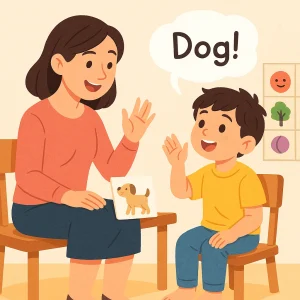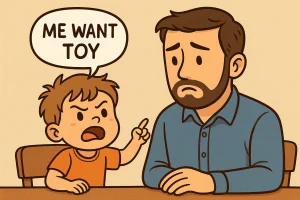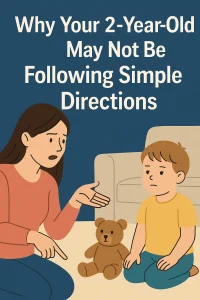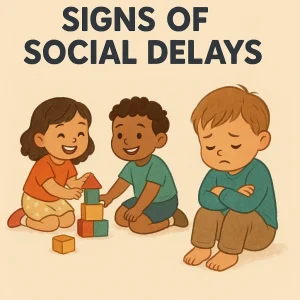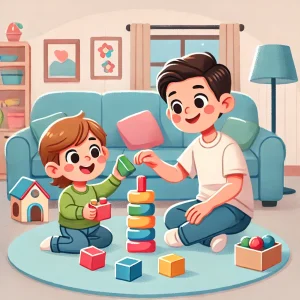Free Online Autism Checklist for Kids Aged 3-6 Years
By Wellness Hub
Last Updated: August 10, 2024
As parents and caregivers, you play a crucial role in your child’s early development. Recognizing the early signs of autism in children aged 3-6 years can make a significant difference in their future. This free autism checklist is designed to help you identify potential red flags and guide you through the next steps. With the right tools and early intervention, you can better support your child’s unique needs and ensure they thrive. Take the first step towards understanding your child’s development with our comprehensive checklist and explore the resources available to you.
Explore our Free Autism Checklist for Ages 0-3 Years today, Visit Here.
Understanding Autism in Young Children
What is Autism Spectrum Disorder (ASD)?
Autism Spectrum Disorder (ASD) is a developmental condition that affects how a person perceives the world and interacts with others. In children aged 3-6 years, the early signs of autism can vary widely but often include difficulties with communication, repetitive behaviors, and limited social interactions. Parents might notice that their child struggles to make eye contact, does not respond to their name, or prefers playing alone. Recognizing these signs early can lead to better support and interventions that cater specifically to the child’s needs.
Why Early Detection Matters
Detecting autism early in a child’s life plays a crucial role in their overall development. Early detection allows for timely interventions that can significantly improve skills like communication, social interactions, and learning. Programs and therapies designed for young children can help them gain essential life skills, making it easier for them to navigate school and social settings as they grow. Early interventions also provide parents and caregivers with the tools and strategies they need to support their child’s development effectively. By understanding the importance of early detection, you can take proactive steps in ensuring your child receives the support they need. For more detailed guidance, explore Autism Screening Tests to understand the processes and benefits of early autism assessments.
Free Autism Checklist for Ages 3-6
1. Key Developmental Milestones
As parents and caregivers, understanding the developmental milestones for children aged 3-6 years is crucial. Here is a simple table that lists typical milestones your child should be reaching at this age:
| Age | Physical Milestones | Cognitive Milestones | Social/Emotional Milestones |
|---|---|---|---|
| 3 years | Hops on one foot | Can complete simple puzzles | Shows affection for friends |
| 4 years | Catches a bounced ball | Counts to ten | Plays mom and dad |
| 5 years | Stands on one foot for 10 seconds | Begins to read simple words | Wants to please friends |
| 6 years | Rides a bicycle with training wheels | Understands the concept of numbers | Knows about things like food and money |
These milestones are guides, not rules. Each child grows at their own pace. However, missing several milestones could be a sign to consider further evaluation.
2. Behavioral Signs to Watch For
Detecting early signs of autism involves observing your child’s behavior patterns. Here are some behaviors to monitor:
- Repetitive behaviors: Engaging in repetitive movements such as rocking, spinning, or hand-flapping.
- Routine fixation: Insistence on following specific routines or rituals; getting extremely distressed with slight changes.
- Limited interests: Showing intense interest in a narrow range of topics or toys.
These signs do not confirm autism on their own but may indicate the need for a free autism assessment test or more comprehensive screening.
3. Communication and Social Skills
Communication and social interactions can be challenging for children on the autism spectrum. This checklist helps identify potential issues:
- Delayed speech development: Not speaking as much as peers or struggling to put words together in phrases.
- Challenges in conversational skills: Difficulty in back-and-forth conversation, limited eye contact, and not using or understanding gestures.
- Social withdrawal: Preferring to play alone, showing little interest in making friends.
If you recognize these signs, consider an autism assessment test to understand better how to support your child’s communication needs.
Sensory Sensitivities
Many children with autism experience heightened or reduced sensitivity to sensory input. Watch for:
- Over-sensitivity: Reacting intensely to sounds, lights, textures, or smells that are typically tolerable.
- Under-sensitivity: Showing little or no reaction to temperature or pain.
Recognizing these sensitivities early can help tailor the child’s environment to their needs, making them feel more comfortable and reducing stress for both the child and family.
This checklist aims to provide a straightforward guide for parents and caregivers to monitor and understand the developmental and behavioral patterns of children aged 3-6. Using tools like the Autism Screening Tests can provide further guidance and support in addressing any concerns that arise from the checklist observations.
Also Read: Myths About Autism: Facts, Insights, and Support
How to Use the Autism Checklist
Guidelines for Parents and Caregivers
Using the free autism checklist for kids aged 3-6 years is straightforward. Start by setting aside a quiet time when you and your child are relaxed. Follow these steps to ensure you effectively use the checklist:
- Prepare Your Environment: Ensure the setting is free from distractions to get a true sense of your child’s behaviors and responses.
- Observe and Note: As your child engages in various activities, observe their behaviors. Use the checklist to note any specific actions or lack of actions that align with the checklist items.
- Be Consistent: Try to observe and use the checklist at different times of the day and across several days. Children can vary in their behavior depending on many factors, like time of day and tiredness.
- Review and Reflect: After completing the observations, review the checklist. Identify any patterns or recurring behaviors that stand out.
- Update Regularly: As children grow and develop, their behaviors can change. Regularly using the checklist can help you track these changes over time.
By following these simple steps, you can gain valuable insights into your child’s development and spot early signs of autism, which can be crucial for early intervention.
What to Do If You Notice Red Flags
If you notice any red flags or behaviors that concern you while using the checklist, it’s important to take action:
- Document Everything: Keep a detailed record of the behaviors you’ve observed. Note the frequency, intensity, and circumstances around these behaviors.
- Consult a Professional: Reach out to a healthcare provider or a specialist in child development. Share your observations and the completed checklist with them.
- Consider a Formal Assessment: Based on your observations and consultation, you might want to consider a formal autism screening. These assessments are detailed and can provide a clearer picture of your child’s developmental status.
- Explore Online Resources: Consider using online tools for a preliminary assessment. Engaging with resources like free online autism tests for kids can provide additional insights and confirm if a more detailed evaluation is needed.
Online Autism Assessment
Taking the Next Step with an Online Assessment
If you suspect your child might be on the autism spectrum, taking an online assessment can be a vital first step. It’s a quick and straightforward way to gain initial insights into your child’s developmental patterns. Our Online Assessment Autism is designed to be user-friendly and accessible, making it easy for you to start from the comfort of your home. This free service helps you understand certain behaviors and traits that might indicate autism, providing a preliminary assessment that can guide your decisions on seeking further professional advice.
What to Expect from an Online Assessment
An online autism assessment simplifies the initial stages of understanding your child’s developmental health. Here’s what you can expect:
- Ease of Access: You can complete the assessment at any time that suits you, eliminating the need for appointments or waiting times.
- Immediate Feedback: Once you complete the assessment, you’ll receive instant preliminary results that outline potential areas of concern.
- Guidance for Next Steps: Based on the assessment outcomes, we offer recommendations on whether to seek further evaluation from a specialist.
Also Read: Online Behavioral Therapy for Kids with Autism
Resources and Support
Understanding Your Child’s Needs
When your child receives a diagnosis of autism, it opens up a pathway to the support and resources that can help them thrive. Here’s a brief guide on what you can access:
- Educational Resources: Many schools offer programs designed specifically for children with autism. These programs focus on both academic and life skills.
- Therapeutic Options: From speech therapy to occupational therapy and behavioral interventions, multiple therapies can support your child’s development.
- Support Groups: Joining groups with other parents who have children with autism can provide emotional support and practical tips.
- Assistive Technologies: Various tools and apps are designed to enhance communication and learning for children with autism.
- Government and Non-profit Services: Many governments and non-profit organizations provide services like therapy funding, respite care, and more.
Accessing these resources early can make a significant difference in your child’s progress. For more detailed information on each point and additional resources, consider taking an Autism Screening Test to better understand your child’s specific needs and the avenues for assistance.
Connecting with Professionals
Finding the right professionals to support your child with autism is crucial. Here’s how you can start:
- Search Locally: Check with your local health clinics or hospitals for specialists in autism care like developmental pediatricians or child psychologists.
- Consult Your Pediatrician: Your child’s pediatrician can refer you to autism specialists.
- Explore Online Platforms: Websites like Wellness Hub offer directories of professionals experienced in autism care.
- Attend Workshops: Many organizations conduct workshops where you can meet and connect with various specialists.
- Join Online Forums: Online communities can also be great places to ask for recommendations.
Working with the right professionals not only helps in managing your child’s condition but also supports your entire family in navigating the challenges of autism. For expert advice and to connect with specialists directly, visit Wellness Hub.
Conclusion
Navigating the early stages of autism can be challenging, but with the right tools, you’re not alone. Our Free Autism Checklist for Kids Aged 3-6 Years offers you a practical guide to understand and monitor your child’s development. By using this checklist and considering a free online autism screening, you empower yourself with knowledge and proactive steps. Early detection is crucial, and your action today can pave the way for better support and outcomes for your child. Let’s take this important step together for a hopeful and informed future.
Frequently Asked Questions:
1. What is the purpose of this free autism checklist?
The free autism checklist is designed to help parents and caregivers identify early signs of autism in children aged 3-6. It focuses on key developmental milestones, social behaviors, communication skills, and sensory sensitivities that are crucial for early detection and intervention.
2. How accurate is this checklist for diagnosing autism?
While the checklist provides a valuable screening tool, it is not a diagnostic tool. It is designed to help you identify potential signs of autism and guide you toward seeking professional evaluation if necessary.
3. Can I use this checklist if my child is slightly younger or older than the 3-6 year age range?
The checklist is tailored specifically for children aged 3-6 years to match their typical developmental stages. For children outside this age range, it’s recommended to consult with a healthcare professional who can provide an age-appropriate evaluation.
4. What should I do if my child shows multiple signs listed in the checklist?
If your child shows several signs from the checklist, consider scheduling an appointment with a pediatrician or a child psychologist who specializes in developmental disorders. They can conduct a comprehensive assessment and provide guidance on the next steps.
5. How often should I use the autism checklist for my child?
Using the checklist periodically can be helpful, especially if your child is at the lower end of the age range or if initial screenings were inconclusive. Re-assessing every six months or as recommended by your healthcare provider is a good practice.
6. Is there a cost involved with using this checklist?
No, the autism checklist is completely free. It is provided as a resource to help parents and caregivers identify early signs of autism without any financial burden.
7. Where can I find more detailed information after completing the checklist?
For more detailed information and further assessment, visit the provided links for Autism Screening Tests and Online Assessment Autism. These resources offer comprehensive guidance and additional screening options.
8. How reliable are the results of the online assessments linked to the checklist?
The online assessments provided are developed by specialists in the field of autism and aim to give a reliable indication of potential autistic traits. However, like the checklist, they should be followed up with professional evaluation for a formal diagnosis.
9. Can this checklist replace a professional diagnosis?
No, this checklist should not replace professional medical advice or a formal diagnosis. It is intended to be a preliminary screening tool that can prompt further investigation by qualified professionals.
10. What are the next steps after completing the checklist and finding concerning signs?
After completing the checklist, if you find signs that concern you, schedule an evaluation with a pediatric developmental specialist. They can offer a thorough diagnosis and discuss potential interventions and support systems tailored to your child’s needs.
About Company
Wellness Hub dedicates itself to enhancing holistic wellness by leveraging a team of seasoned psychologists and management experts. Our professionals bring extensive experience in psychometric assessments, counseling, and behavioral skills training. We have crafted a robust suite of psychological tests, questionnaires, case studies, and exercises tailored to meet diverse wellness needs. Committed to innovation, Wellness Hub integrates cutting-edge technology to streamline and enrich our services, supported by skilled technical personnel to ensure seamless delivery and support. Our mission empowers individuals through comprehensive and accessible wellness solutions.
Book your Free Consultation Today
Parent/Caregiver Info:
Client’s Details:
* Error Message

